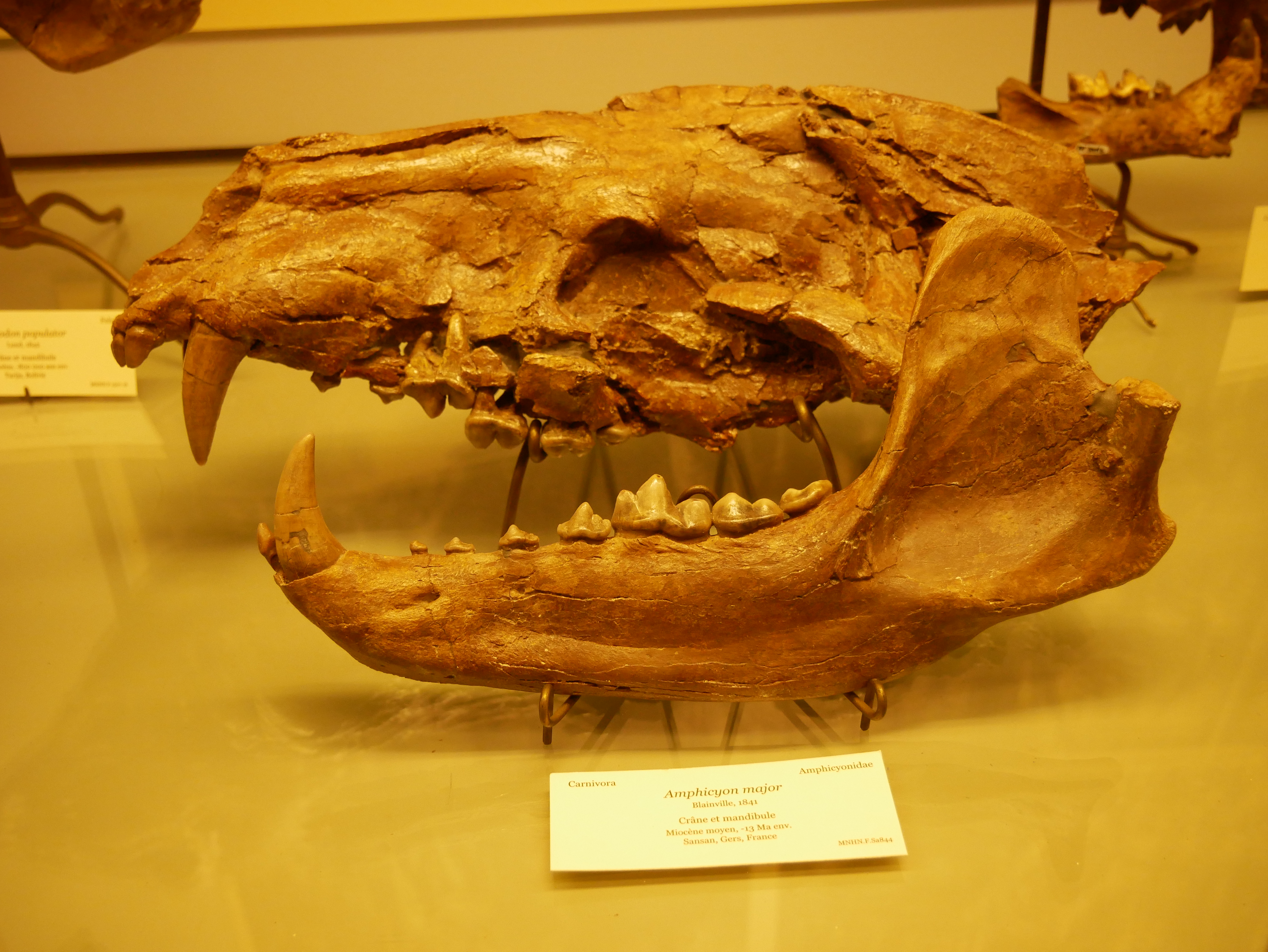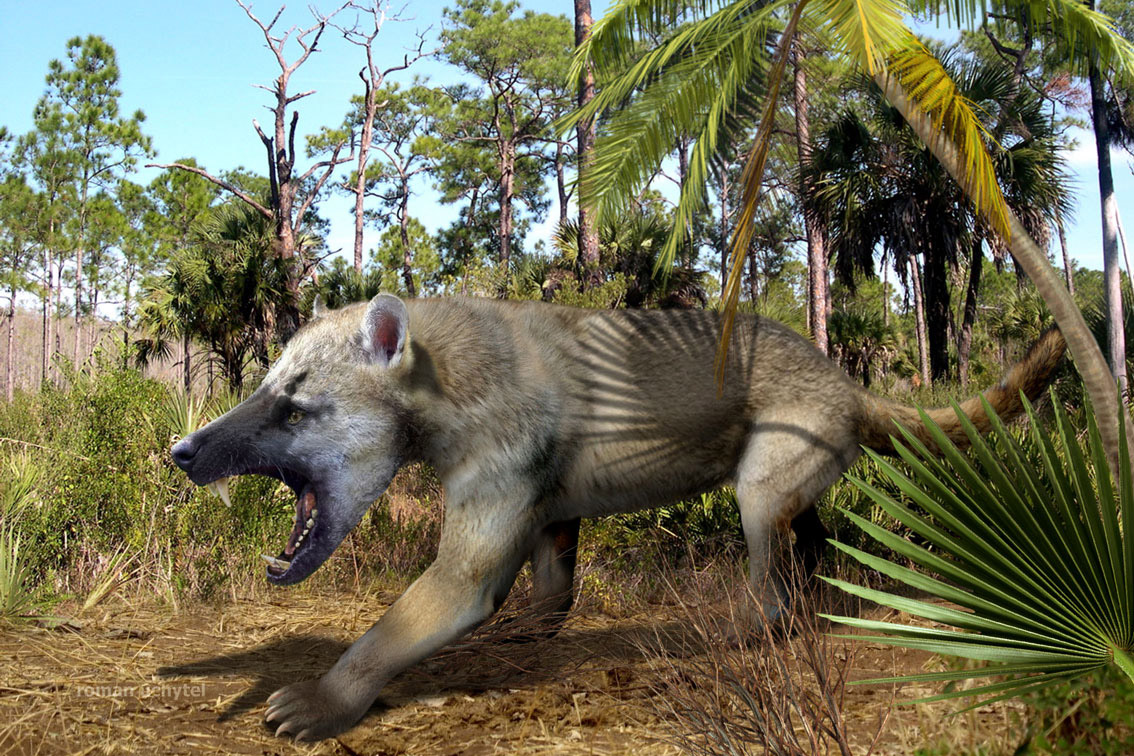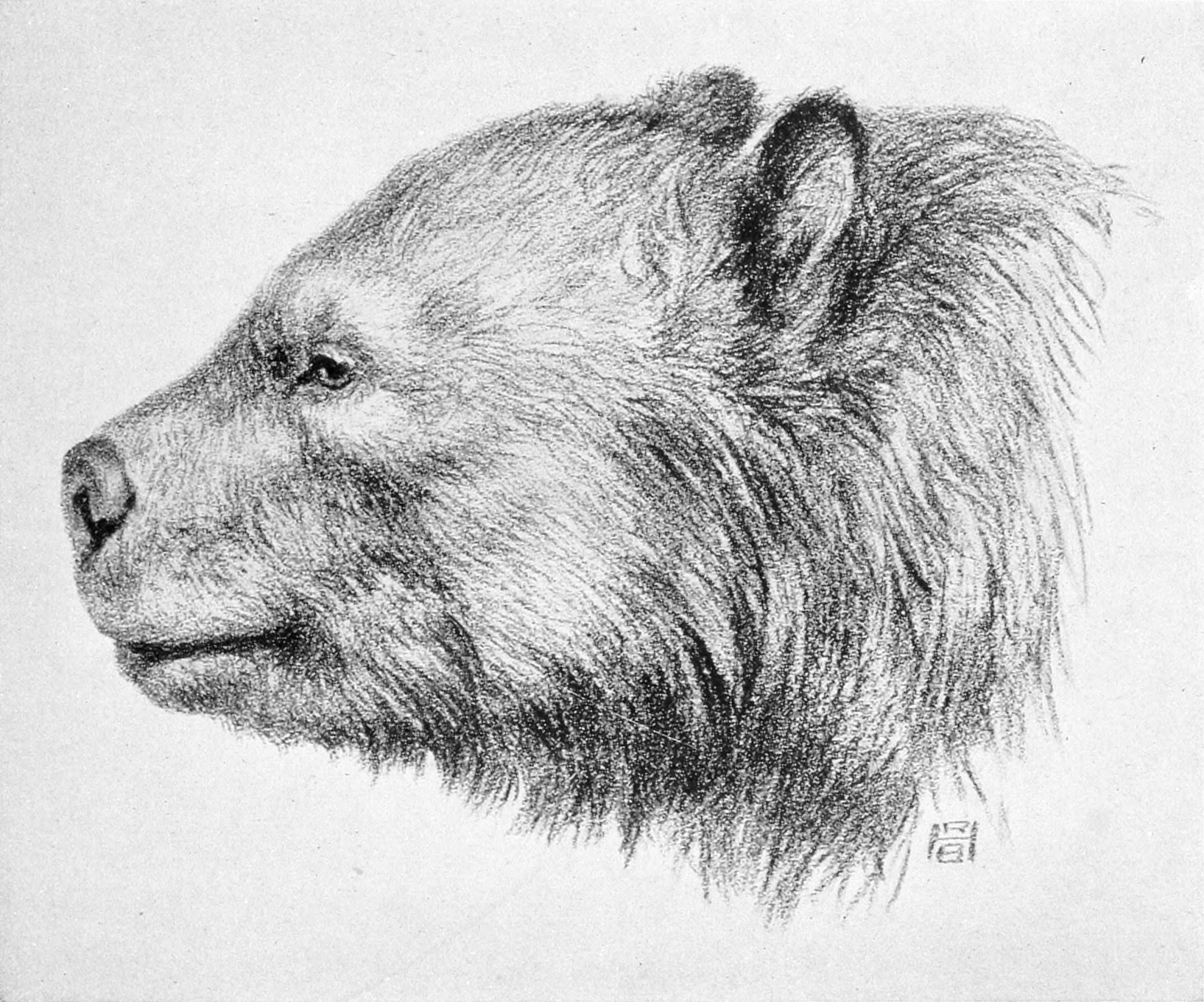|
Amphicyon
''Amphicyon'' ("ambiguous dog") is an extinct genus of large carnivorous bone-crushing mammals, popularly known as bear dogs, of the family Amphicyonidae, subfamily Amphicyoninae, from the Burdigalian Epoch until the late Pliocene, with the creature having bear-like and dog-like features. They ranged over North America, Europe, Asia, and Africa from 16.9 to 2.6 Ma ago, existing for approximately . Morphology ''Amphicyon'' was the typical bear-dog amphicyonid with morphology similar to both bears and dogs. With its robust build and maximum length of 2.5 m (8 ft), the largest species looked more like a bear than a dog. It had a large heavy tail, thick neck, robust limbs and teeth like a wolf. It was probably an omnivore with a lifestyle comparable to that of the brown bear. The ''Amphicyon'' was very large for predators of its time but this advantage eventually became a disadvantage because its large body mass was too large to take faster prey. ''A. major'' has been est ... [...More Info...] [...Related Items...] OR: [Wikipedia] [Google] [Baidu] |
Amphicyon Major
''Amphicyon'' ("ambiguous dog") is an extinct genus of large carnivorous bone-crushing mammals, popularly known as bear dogs, of the family Amphicyonidae, subfamily Amphicyoninae, from the Burdigalian Epoch until the late Pliocene, with the creature having bear-like and dog-like features. They ranged over North America, Europe, Asia, and Africa from 16.9 to 2.6 Ma ago, existing for approximately . Morphology ''Amphicyon'' was the typical bear-dog amphicyonid with morphology similar to both bears and dogs. With its robust build and maximum length of 2.5 m (8 ft), the largest species looked more like a bear than a dog. It had a large heavy tail, thick neck, robust limbs and teeth like a wolf. It was probably an omnivore with a lifestyle comparable to that of the brown bear. The ''Amphicyon'' was very large for predators of its time but this advantage eventually became a disadvantage because its large body mass was too large to take faster prey. ''A. major'' has ... [...More Info...] [...Related Items...] OR: [Wikipedia] [Google] [Baidu] |
Amphicyonid
Amphicyonidae is an extinct family of terrestrial carnivorans belonging to the suborder Caniformia. They first appeared in North America in the middle Eocene (around 45 mya), spread to Europe by the late Eocene (35 mya), and appear in Asia, and Africa by the early Miocene (23 mya). They had largely disappeared worldwide by the late Miocene (8 mya), with the latest recorded species at the end of the Miocene in Pakistan. They were among the first carnivorans to evolve large body size. Later in their history, they came into competition with hesperocyonine and borophagine canids. As dogs evolved similar body sizes and cranial and dental adaptations, the rise of these groups may have led to their extinction. Amphicyonids are often colloquially referred to as "bear-dogs". Taxonomy The family was erected by Haeckel (1886) lso attributed to Trouessart (1885) Their exact position has long been disputed. Some early paleontologists defined them as members of the family Canidae, bu ... [...More Info...] [...Related Items...] OR: [Wikipedia] [Google] [Baidu] |
Bear Dog
Amphicyonidae is an extinct family of terrestrial carnivorans belonging to the suborder Caniformia. They first appeared in North America in the middle Eocene (around 45 mya), spread to Europe by the late Eocene (35 mya), and appear in Asia, and Africa by the early Miocene (23 mya). They had largely disappeared worldwide by the late Miocene (8 mya), with the latest recorded species at the end of the Miocene in Pakistan. They were among the first carnivorans to evolve large body size. Later in their history, they came into competition with hesperocyonine and borophagine canids. As dogs evolved similar body sizes and cranial and dental adaptations, the rise of these groups may have led to their extinction. Amphicyonids are often colloquially referred to as "bear-dogs". Taxonomy The family was erected by Haeckel (1886) lso attributed to Trouessart (1885) Their exact position has long been disputed. Some early paleontologists defined them as members of the family Canidae, but ... [...More Info...] [...Related Items...] OR: [Wikipedia] [Google] [Baidu] |
Amphicyonid
Amphicyonidae is an extinct family of terrestrial carnivorans belonging to the suborder Caniformia. They first appeared in North America in the middle Eocene (around 45 mya), spread to Europe by the late Eocene (35 mya), and appear in Asia, and Africa by the early Miocene (23 mya). They had largely disappeared worldwide by the late Miocene (8 mya), with the latest recorded species at the end of the Miocene in Pakistan. They were among the first carnivorans to evolve large body size. Later in their history, they came into competition with hesperocyonine and borophagine canids. As dogs evolved similar body sizes and cranial and dental adaptations, the rise of these groups may have led to their extinction. Amphicyonids are often colloquially referred to as "bear-dogs". Taxonomy The family was erected by Haeckel (1886) lso attributed to Trouessart (1885) Their exact position has long been disputed. Some early paleontologists defined them as members of the family Canidae, bu ... [...More Info...] [...Related Items...] OR: [Wikipedia] [Google] [Baidu] |
Amphicyoninae
Amphicyoninae is a subfamily of extinct bear-dogs, large terrestrial carnivores belonging to the suborder Caniformia and which inhabited North America, Eurasia, and Africa from ~37.2—2.6 Ma. Amphicyoninae existed for approximately ~. Amphicyoninae was named by Trouessart (1885). It was assigned to Canidae by Matthew (1902); to Ursidae by Ginsburg (1977); and to Amphicyonidae by Hunt (1998). Genera include: *''Agnotherium'', found in both Europe and N. Africa *''Amphicyon'', found in both Europe and N. America *''Cynelos'', synonyms include ''Absonodaphoenus'' (from Florida) and ''Hecubides'' (from Africa), endemic to N. America *'' Cynodictis'' *''Ischyrocyon'', ''Hadrocyon'' is a synonym, endemic to N. America *''Goupilictis'' *''Magericyon'' *''Pliocyon'', endemic to N. America *''Pseudocyon'', ''Amphicyonopsis'' is a synonym, endemic to Europe and N. America *''Ysengrinia'', found in both Europe and N. America Fossil distribution Specimens have been recovered from: ... [...More Info...] [...Related Items...] OR: [Wikipedia] [Google] [Baidu] |
Ischyrocyon
''Ischyrocyon'' is an extinct genus of bear dogs, of the subfamily Amphicyoninae, which inhabited North America during the Late Miocene. It lived ~13.6—10.3 Ma ago, existing for approximately . Behavior In a study published in 2020, examination of the relative grinding area of the molars of ''Ischyrocyon'' indicated that it was purely carnivorous, and not omnivorous as previously assumed. Both ''Ischyrocyon'' and its relative, ''Amphicyon'' possessed skeletal features that are characteristic of both ambush and pursuit living predators. As such, it is believed via this evidence that ''Ischyrocyon'' probably pursued prey for longer distances but at slower speeds than living ambush predators do. Upon catching up to its prey, ''Ischyrocyon'' probably grabbed its victims using its powerfully muscled forelimbs before killing them by tearing into the prey's ribcage or neck using its large, strong canines set in its narrow snout. Fossil distribution * Blair Junction, Esmeralda Coun ... [...More Info...] [...Related Items...] OR: [Wikipedia] [Google] [Baidu] |
Bear
Bears are carnivoran mammals of the family Ursidae. They are classified as caniforms, or doglike carnivorans. Although only eight species of bears are extant, they are widespread, appearing in a wide variety of habitats throughout the Northern Hemisphere and partially in the Southern Hemisphere. Bears are found on the continents of North America, South America, Europe, and Asia. Common characteristics of modern bears include large bodies with stocky legs, long snouts, small rounded ears, shaggy hair, plantigrade paws with five nonretractile claws, and short tails. While the polar bear is mostly carnivorous, and the giant panda feeds almost entirely on bamboo, the remaining six species are omnivorous with varied diets. With the exception of courting individuals and mothers with their young, bears are typically solitary animals. They may be diurnal or nocturnal and have an excellent sense of smell. Despite their heavy build and awkward gait, they are adept runners, cli ... [...More Info...] [...Related Items...] OR: [Wikipedia] [Google] [Baidu] |
Bears
Bears are carnivoran mammals of the family Ursidae. They are classified as caniforms, or doglike carnivorans. Although only eight species of bears are extant, they are widespread, appearing in a wide variety of habitats throughout the Northern Hemisphere and partially in the Southern Hemisphere. Bears are found on the continents of North America, South America, Europe, and Asia. Common characteristics of modern bears include large bodies with stocky legs, long snouts, small rounded ears, shaggy hair, plantigrade paws with five nonretractile claws, and short tails. While the polar bear is mostly carnivorous, and the giant panda feeds almost entirely on bamboo, the remaining six species are omnivorous with varied diets. With the exception of courting individuals and mothers with their young, bears are typically solitary animals. They may be diurnal or nocturnal and have an excellent sense of smell. Despite their heavy build and awkward gait, they are adept runners, climbers, ... [...More Info...] [...Related Items...] OR: [Wikipedia] [Google] [Baidu] |
Pliocene
The Pliocene ( ; also Pleiocene) is the epoch in the geologic time scale that extends from 5.333 million to 2.58See the 2014 version of the ICS geologic time scale million years ago. It is the second and most recent epoch of the Neogene Period in the . The Pliocene follows the Epoch and is followed by the Epoch. Prior to the 2009 ... [...More Info...] [...Related Items...] OR: [Wikipedia] [Google] [Baidu] |
Gray Wolf
The wolf (''Canis lupus''; : wolves), also known as the gray wolf or grey wolf, is a large canine native to Eurasia and North America. More than thirty subspecies of ''Canis lupus'' have been recognized, and gray wolves, as popularly understood, comprise wild subspecies. The wolf is the largest extant member of the family Canidae. It is also distinguished from other ''Canis'' species by its less pointed ears and muzzle, as well as a shorter torso and a longer tail. The wolf is nonetheless related closely enough to smaller ''Canis'' species, such as the coyote and the golden jackal, to produce fertile hybrids with them. The banded fur of a wolf is usually mottled white, brown, gray, and black, although subspecies in the arctic region may be nearly all white. Of all members of the genus ''Canis'', the wolf is most specialized for cooperative game hunting as demonstrated by its physical adaptations to tackling large prey, its more social nature, and its highly adva ... [...More Info...] [...Related Items...] OR: [Wikipedia] [Google] [Baidu] |
Tail
The tail is the section at the rear end of certain kinds of animals’ bodies; in general, the term refers to a distinct, flexible appendage to the torso. It is the part of the body that corresponds roughly to the sacrum and coccyx in mammals, reptiles, and birds. While tails are primarily a feature of vertebrates, some invertebrates including scorpions and springtails, as well as snails and slugs, have tail-like appendages that are sometimes referred to as tails. Tailed objects are sometimes referred to as "caudate" and the part of the body associated with or proximal to the tail are given the adjective "caudal". Function Animal tails are used in a variety of ways. They provide a source of locomotion for fish and some other forms of marine life. Many land animals use their tails to brush away flies and other biting insects. Most canines use their tails to comunicate mood and intention . Some species, including cats and kangaroos, use their tails for balance; and some, such ... [...More Info...] [...Related Items...] OR: [Wikipedia] [Google] [Baidu] |
Neck
The neck is the part of the body on many vertebrates that connects the head with the torso. The neck supports the weight of the head and protects the nerves that carry sensory and motor information from the brain down to the rest of the body. In addition, the neck is highly flexible and allows the head to turn and flex in all directions. The structures of the human neck are anatomically grouped into four compartments; vertebral, visceral and two vascular compartments. Within these compartments, the neck houses the cervical vertebrae and cervical part of the spinal cord, upper parts of the respiratory and digestive tracts, endocrine glands, nerves, arteries and veins. Muscles of the neck are described separately from the compartments. They bound the neck triangles. In anatomy, the neck is also called by its Latin names, or , although when used alone, in context, the word ''cervix'' more often refers to the uterine cervix, the neck of the uterus. Thus the adjective ''cervical'' ma ... [...More Info...] [...Related Items...] OR: [Wikipedia] [Google] [Baidu] |




.png)
